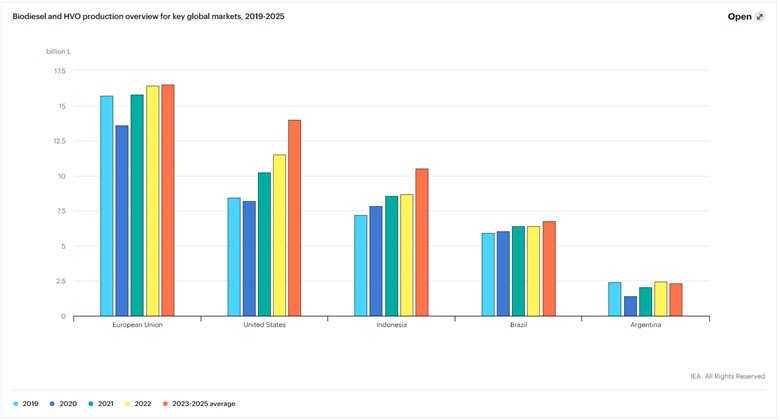Renewable Diesel Netback: Where’s The Value?

The demand and price for renewable diesel are on the rise and bringing familiar and new market participants to the market. Domestic production of biomass-based diesel has struggled to keep up with demand, which is primarily focused on the U.S. West Coast. The U.S. domestic refining industry is moving quickly to fill the market need, with planned production capacity forecast to increase four-fold in the next three years. However, if companies want to capture the value and ultimately profit, they’ll need to understand their netback for renewable diesel.
MORE: Renewable Diesel In The Marketplace
Understanding Your Renewable Diesel Netback
According to the U.S. Energy Information Administration (EIA), net imports of biomass-based diesel rose from 25% in 2019 to 50% in 2020. Demand will continue to rise into 2021 due to low carbon-based regulations spreading at the state level from Washington and Minnesota to Iowa and New York. In Canada, British Columbia has led the way, but Canada’s national “Clean Fuel Standard” is also setting regulations that will increase renewable diesel use.

Calculating the netback, a non-GAAP measure of operating profitability used to measure efficiencies takes on a slightly different flavor when used to calculate renewable diesel value. While the basic components are the same for renewable diesel as its fossil fuel counterpart, the varied regulations surrounding renewable fuels, the markets that determine their value, and the new feedstocks for traditional refiners require updates to the netback calculation and overall value capture.
Netback is traditionally calculated by taking the revenue from the sale of a product and then subtracting transportation costs, production costs, administrative expenses (including working capital), and revenue (or loss) from trading and hedging activities. For the netback calculation of renewable diesel, there’s an added wrinkle—a tax credit component.

Like any good analysis, a company’s netback should start with a clear understanding of what’s being measured and how the result will be used. Ideally, stakeholders from across the value chain are involved in the development and, as the results are analyzed, a balanced view of how to continuously improve can be determined. Leaving out key participants can lead to finger-pointing over results, which negates the goal of adding value to everyone.
Below is a more detailed look at the main components of renewable diesel netback analysis:
- Product Sale Revenue
- Most mature organizations will have processes in place to capture the necessary data granularity on sales for a netback analysis but may want to revisit those processes to determine if they have the right customer and sales/marketing channel information for renewable diesel.
- Production Costs
- Determining production costs can be tricky if the facility is used for fossil fuel refining as well as renewable diesel production. Operations and commercial stakeholders will need to align with the methodology for allocating costs.
- One of the biggest drivers of production costs will be the feedstock, which for many renewable diesel producers will be a new commodity. Fitting the new commodity into existing processes and systems will require thorough analysis to ensure support for the netback calculation.
- Transportation Costs
- For feedstock in and refined products out, one of the primary transportation mechanisms is railcar. For organizations that already have robust rail capability, these cost calculations will be easier to analyze while a novice group might struggle.
- Trading Costs
- New products, new markets, new feedstocks, and potentially new customers come with new risk exposures. While the commercial or trading components of the organization will likely have experience with Renewable Identification Numbers (RINs), low-carbon fuel standard (LCFS) credit markets are different and fragmented, but they have the potential to add value to the netback.
- Between RINs and the various carbon credits (both attached and separated from the physical product), organizations will need a methodology that determines how the value associated with credits is allocated to the netback.
- Based on an organization’s risk policy, there will be hedging activity for the product, feedstock, and even RINs/carbon credits, that must be accounted for and allocated back to the renewable diesel netback.
- Tax Credits
- The biomass-based diesel tax credit adds $1 per gallon to the value of renewable diesel. Accounting for this item alone can swing the profitability of renewable diesel positive – though an organization’s tax team must work to ensure that value is captured.
- Administrative Expenses
- Operational, commercial, logistics, and accounting overhead are just a part of the administrative expenses that need to be considered in the netback. To capture the value of participating in renewable fuel markets, producers must account for the credits and integrate them with various government systems.
- Allocating costs across all areas of an organization requires allocation rules, and to run efficiently, an organization needs a robust mechanism to set up, monitor, and update those allocations as business conditions change. Setting up allocations in a spreadsheet or “hard-coding” them into reporting might serve needs in the short-term, but rarely is it sustainable or efficient in the long-term.
Many of the components discussed above might sound easy to coordinate and execute on their own but reporting a clean netback value requires cross-company coordination and planning. Like any new business endeavor in the 21st century, long-term success in the renewable diesel market hinges on aligning three principal areas:
- People – Does everyone involved in the renewable diesel business understand the business goals and intended outcomes, and are they aligned to how those outcomes will be measured?
- Process – Each functional area will need to bring core processes to bear, but companies should consider a cross-functional team to help develop processes and promote the implementation and understanding.
- Technology – Beyond the operational processing technology to produce renewable diesel, core downstream systems will likely require updates or enhancements. Energy trading and risk management (ETRM) systems and enterprise resource planning (ERP) software will be central to facilitate the processes of capturing and tracking multiple data points, ensuring value will be reported efficiently and transparently.
Renewable diesel is one of the many parts of the energy puzzle that will help move the country—and the world—towards a more sustainable future and facilitate the energy transition. Companies looking to support that future must plan now to ensure that they can capture maximum value from this new revenue stream.
Related Insights
Our experts are here
for you.
When you choose Opportune, you gain access to seasoned professionals who not only listen to your needs, but who will work hand in hand with you to achieve established goals. With a sense of urgency and a can-do mindset, we focus on taking the steps necessary to create a higher impact and achieve maximum results for your organization.
LeadershipGeneral Contact Form
Looking for expertise in the energy industry? We’ve got you covered.
Find out why the new landmark legislation should provide a much-needed boost for the development of carbon capture.




